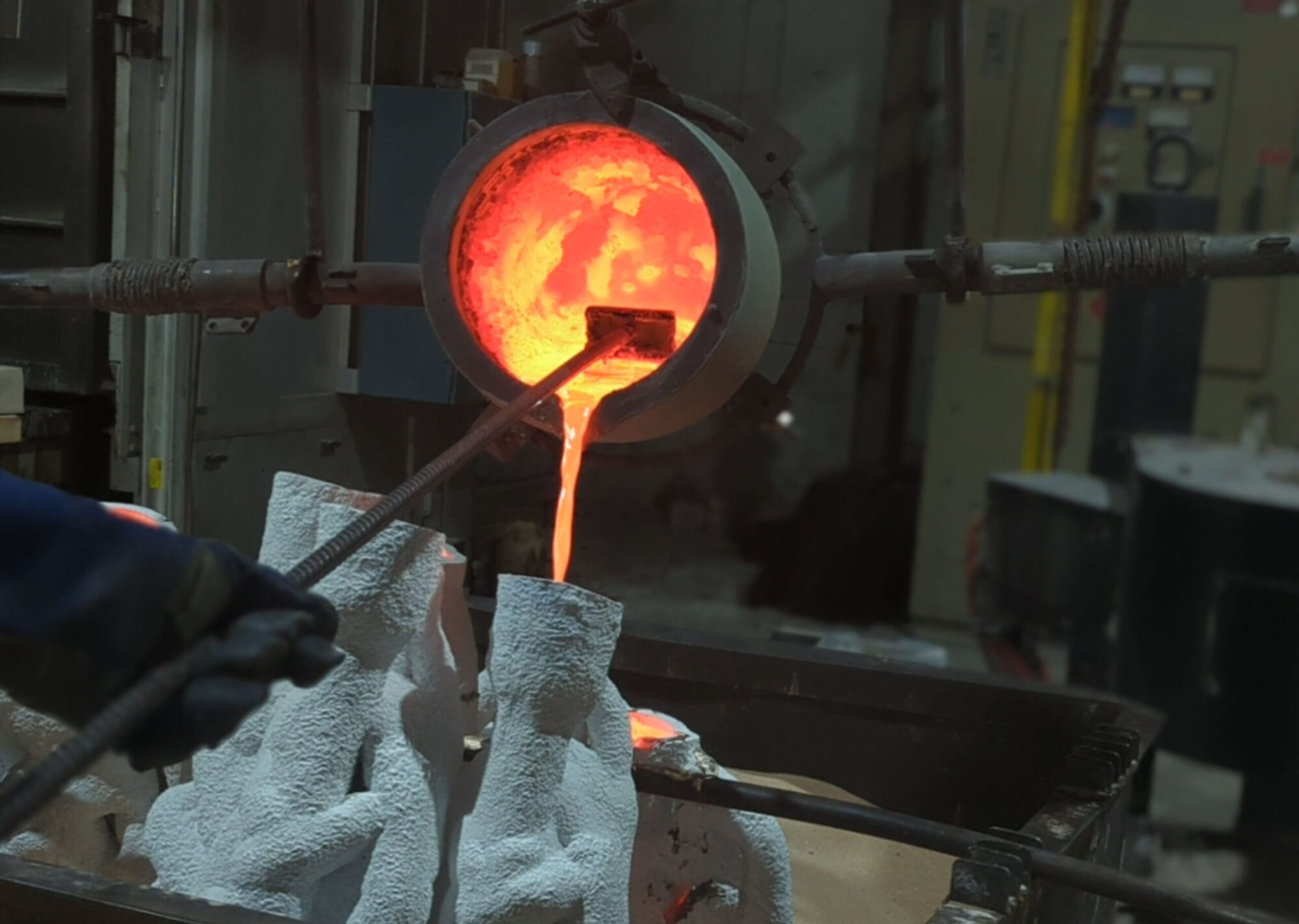Casting “Metal Working”
Casting involves pouring liquid metal into a mold, which contains a hollow cavity of the desired shape and then is allowed to solidify. The solidified part is also known as a casting, which is ejected or broken out of the mold to complete the process. Casting is most often used for making complex shapes that would be difficult or uneconomical to make by other methods.
The casting process is subdivided into two main categories: expendable and non-expendable casting. It is further broken down by the mold material, such as sand or metal, and pouring methods, such as gravity, vacuum, or low-pressure
Casting Theory
Casting is a solidification process, which means the solidification phenomenon controls most of the properties of the casting. Moreover, most of the casting defects occur during solidification, such as gas porosity and solidification shrinkage.
Solidification occurs in two steps: nucleation and crystal growth. In the nucleation stage solid particles form within the liquid. When these particles form their internal energy is lower than the surrounding liquid, which creates an energy interface between the two. The formation of the surface at this interface requires energy, so as nucleation occurs the material actually undercools, that is it cools below its freezing temperature, because of the extra energy required to form the interface surfaces. It then recalescences, or heats back up to its freezing temperature, for the crystal growth stage. Note that nucleation occurs on a pre-existing solid surface because not as much energy is required for a partial interface surface, as is for a complete spherical interface surface. This can be advantageous because fine-grained castings possess better properties than coarse-grained castings. A fine grain structure can be induced by grain refinement or inoculation, which is the process of adding impurities to induce nucleation.
All of the nucleations represent a crystal, which grows as the heat of fusion is extracted from the liquid until there is no liquid left. The direction, rate, and type of growth can be controlled to maximize the properties of the casting. Directional solidification is when the material solidifies at one end and proceeds to solidify to the other end; this is the most ideal type of grain growth because it allows liquid material to compensate for shrinkage.
More information:
- Lost Wax Casting method
- Casting process
- Expendable Mold Casting
- Non-Expendable Mold Casting
- Patina – Patination
Casting Metals
- Bronze
- Silver
- Gold
- Stainless Steel
- Aluminum
If you have any questions regarding our process, please feel free to email us at sales@americanbronze.com or give us a call.
International 00+1+407-328-8090
Toll-Free 1+800-881-8090
Local 407-328-8090

